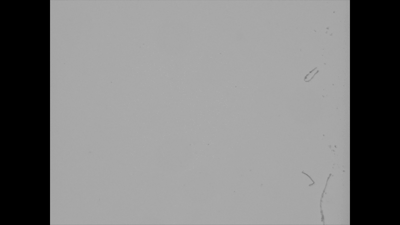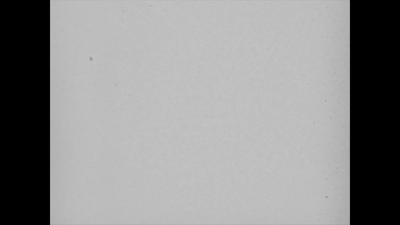Landsberg DP camp: school, library, children
CU DP boy in Landsberg, Germany. Hebrew sign. Teacher and children dancing, playing, learning. Children in classroom at desks learning Hebrew. Teacher pointing to map of Israel. Reading posted notices. Men and women outside. Sign reading "Landsberger Szpigel Ojshams Cusztand in Erec Jisroel." Man dictating letter to women with typewriter. The woman at the typewriter has been identified by a patron as Minna Aspler (nee Friedland.) Distributing newspapers. Men smiling at camera. More, reading papers posted on board. CU, Chaim N. Bialik Library sign. Reading in library. Men reading papers at tables. Men shoveling/digging. The third man on the left shovelling has been identified as Moe Aspler by a patron. Throwing dirt in UNRRA truck. Building? Women and children on UNRRA truck, smiling. CUs, some children eating, sleeping. MCU child with luggage. Others in BG with luggage, baby carriages. DPs in field with luggage. CU, girl eating bread. Pan, large building, people gathered. Pan, children, shoes. Elderly Jewish man speaking to another. Group of DP children gathering near men, laughing. CUs children, feet, some barefoot. Pan, men. George Kadish, born Zvi (Hirsh) Kadushin (1910- 1997), was a Lithuanian Jewish photographer who documented life in the Kovno Ghetto during the Holocaust. Prior to World War II he was a mathematics, science and electronics teacher at a Hebrew High School in Kovno, Lithuania. As a hobby, Kadish was a photographer. He was skilled at making home-made cameras. During the period of Nazi control of Lithuania he successfully photographed various scenes of life and its difficulties in the ghetto in clandestine circumstances. Kadish constructed cameras by which he could photograph through the buttonhole of his coat or over a window sill. He was able to photograph sensitive scenes that would attract the ire of Nazis or collaborators, such as scenes of people gathered for forced labor, burning of the ghetto, and deportations. He enlisted the help of Yehuda Zupowitz, a high-ranking officer in the ghetto's Jewish police to help hide his negatives and prints. Kadish retrieved the collection of photographic negatives upon his return to the destroyed ghetto. After Germany's surrender on May 8, 1945, Kadish left Lithuania with his extrordinary documentary trove for Germany. There in the American Zone, he mounted exhibitions of his photographs for survivors residing in displaced persons camps. He also filmed and photographed life in the displaced persons camps in Germany.
- EHRI
- Archief
- us-005578-irn1000694
- Film
- Landsberg, Germany
- SCHOOLS
Bij bronnen vindt u soms teksten met termen die we tegenwoordig niet meer zouden gebruiken, omdat ze als kwetsend of uitsluitend worden ervaren.Lees meer









